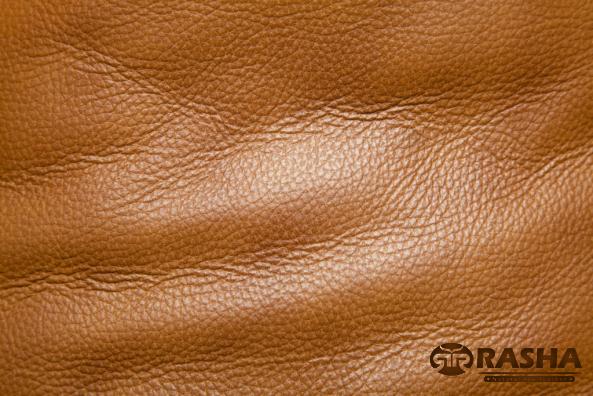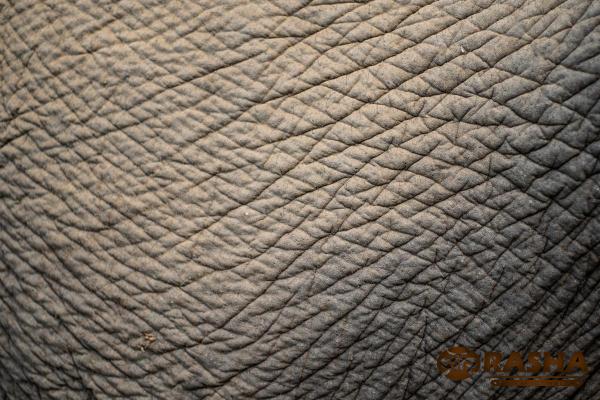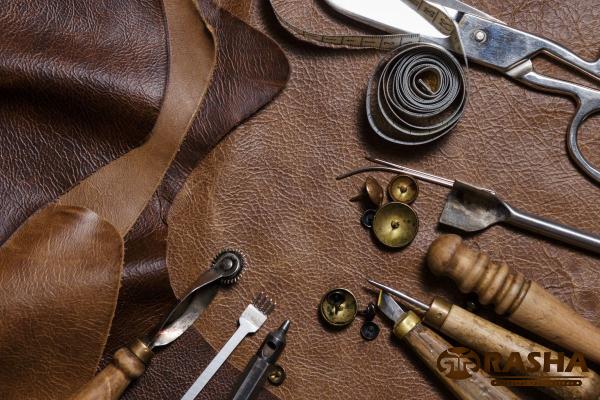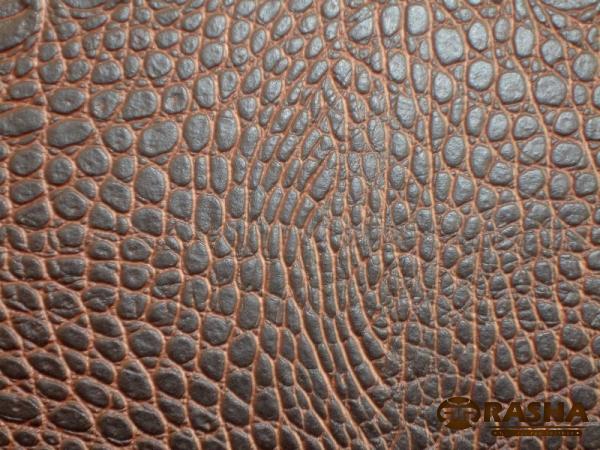In recent years, the demand for high-quality leather products has been on the rise. Among the various types of leather available, raw goat leather has gained considerable attention for its distinct features and versatility. With a rich history rooted in ancient civilizations, this unique material has evolved to become a sought-after choice for luxury goods and fashion accessories. In this article, we delve into the world of raw goat leather, exploring its origins, characteristics, and wide-ranging applications. Origins of Raw Goat Leather: Goat leather has been utilized for various purposes since ancient times. Its origins can be traced back to early civilizations such as the Egyptians, Greeks, and Romans, who valued the material for its durability, flexibility, and abundance. Traditionally, goat leather has been sourced from countries with large livestock industries, including India, China, Bangladesh, Pakistan, and Nigeria. However, nowadays, goat leather production has become a global industry, with countries like Italy, Turkey, and Spain playing significant roles in its production. Characteristics of Raw Goat Leather: 1. Softness and Suppleness: One of the most distinctive characteristics of raw goat leather is its soft and supple feel. The unique structure of goat skin fibers, which are fine and tightly packed, results in a smooth texture and excellent pliability. This attribute makes goat leather ideal for a range of applications, including garments, handbags, and shoes. 2. Strength and Durability: Despite its softness, raw goat leather possesses remarkable strength and durability. The tightly packed collagen fibers in goat skin provide excellent resistance to tearing and puncturing, ensuring that products made from this leather stand the test of time. 3. Lightweight: Compared to other types of leather, goat leather is relatively lightweight. This makes it a popular choice for products where weight is a crucial factor, such as travel bags and footwear. 4. Natural Breathability: Goat leather offers natural breathability due to its porous structure. This allows air circulation, preventing the accumulation of moisture and keeping the products made from this leather comfortable for extended periods. 5. Water Resistance: Goat leather has inherently good water resistance due to its natural lanolin content. However, it is important to note that proper care and maintenance are essential to preserving this characteristic over time. Applications of Raw Goat Leather: 1. Fashion Industry: Raw goat leather is widely used in the fashion industry for crafting various products such as clothing, footwear, handbags, and accessories. Its softness, durability, and elegant appearance make it a preferred choice for luxury brands and designers. Goat leather is particularly popular for making gloves, jackets, and shoes, where the combination of lightweight, durability, and suppleness is highly desired.

leather
 2. Upholstery: Raw goat leather has found its place in the world of furniture upholstery. Its natural softness and resistance to scratches make it an attractive choice for use in sofas, chairs, and automotive interiors. Additionally, its ability to withstand light and heat exposure further enhances its suitability for upholstery purposes. 3. Bookbinding: Goat leather has been used for centuries in the art of bookbinding for its durability and exquisite appearance. Its smooth texture and ability to age gracefully make it a favorite among book enthusiasts and collectors, providing an elegant and timeless finish to luxury journals, notebooks, and sketchbooks. 4. Leather Goods: The versatility of raw goat leather extends to the production of small leather goods, including wallets, cardholders, belts, and watch straps. The combination of strength, softness, and lightweight properties makes goat leather an ideal material for these accessories, providing comfort and longevity. 5. Sporting Goods: Raw goat leather is often utilized in the manufacturing of sporting goods, such as baseball gloves and boxing gloves. Its lightweight nature combined with excellent durability and flexibility makes it an excellent choice for these applications where grip, comfort, and protection are essential. Sustainable Aspects: As consumers become increasingly conscious about the environmental impact of their purchases, sustainability has gained prominence in the leather industry. In this regard, goat leather holds certain advantages over other types of leather. Goats are less resource-intensive than larger livestock, such as cows, as they require less space, feed, and water. Additionally, goat leather production often makes use of byproducts from the goat meat industry, promoting the concept of waste reduction and a more sustainable supply chain. Conclusion: Raw goat leather stands out as a versatile and elegant material, widely used in a range of industries that value its unique characteristics. Its softness, strength, lightweight nature, and natural breathability make it highly sought-after in the fashion, upholstery, bookbinding, leather goods, and sporting goods sectors. As sustainability gains importance in the market, goat leather’s relatively lower environmental impact compared to other types of leather contributes to its appeal. Whether it’s a luxurious fashion item, a furniture piece, or a cherished handcrafted journal, raw goat leather continues to captivate consumers and artisans alike with its timeless beauty and superior quality.I. The Global Market for Raw Goat Leather: In recent years, the global market for raw goat leather has been experiencing significant growth.
2. Upholstery: Raw goat leather has found its place in the world of furniture upholstery. Its natural softness and resistance to scratches make it an attractive choice for use in sofas, chairs, and automotive interiors. Additionally, its ability to withstand light and heat exposure further enhances its suitability for upholstery purposes. 3. Bookbinding: Goat leather has been used for centuries in the art of bookbinding for its durability and exquisite appearance. Its smooth texture and ability to age gracefully make it a favorite among book enthusiasts and collectors, providing an elegant and timeless finish to luxury journals, notebooks, and sketchbooks. 4. Leather Goods: The versatility of raw goat leather extends to the production of small leather goods, including wallets, cardholders, belts, and watch straps. The combination of strength, softness, and lightweight properties makes goat leather an ideal material for these accessories, providing comfort and longevity. 5. Sporting Goods: Raw goat leather is often utilized in the manufacturing of sporting goods, such as baseball gloves and boxing gloves. Its lightweight nature combined with excellent durability and flexibility makes it an excellent choice for these applications where grip, comfort, and protection are essential. Sustainable Aspects: As consumers become increasingly conscious about the environmental impact of their purchases, sustainability has gained prominence in the leather industry. In this regard, goat leather holds certain advantages over other types of leather. Goats are less resource-intensive than larger livestock, such as cows, as they require less space, feed, and water. Additionally, goat leather production often makes use of byproducts from the goat meat industry, promoting the concept of waste reduction and a more sustainable supply chain. Conclusion: Raw goat leather stands out as a versatile and elegant material, widely used in a range of industries that value its unique characteristics. Its softness, strength, lightweight nature, and natural breathability make it highly sought-after in the fashion, upholstery, bookbinding, leather goods, and sporting goods sectors. As sustainability gains importance in the market, goat leather’s relatively lower environmental impact compared to other types of leather contributes to its appeal. Whether it’s a luxurious fashion item, a furniture piece, or a cherished handcrafted journal, raw goat leather continues to captivate consumers and artisans alike with its timeless beauty and superior quality.I. The Global Market for Raw Goat Leather: In recent years, the global market for raw goat leather has been experiencing significant growth.
Specifications of leather
 The increasing demand for luxury goods, coupled with the rising popularity of sustainable and cruelty-free materials, has contributed to the expansion of this market. The fashion industry plays a crucial role in driving the demand for raw goat leather, with luxury brands and designers incorporating it into their collections. In addition, the growing interest in eco-friendly and ethically sourced materials has led to a surge in demand for raw goat leather from conscious consumers. II. Growth Drivers and Market Trends: Several factors are propelling the growth of the raw goat leather market. Firstly, consumers are increasingly seeking unique and quality products, and raw goat leather offers a distinct texture and appearance compared to other types of leather. Its softness and suppleness make it highly desirable for fashion items, while its natural breathability adds to its appeal. Additionally, the lightweight nature of raw goat leather makes it a preferred choice for travelers and those seeking comfortable footwear options. Moreover, the rise of e-commerce and the ease of international trade have expanded the market for raw goat leather globally, allowing manufacturers and suppliers to reach a wider customer base. The increasing adoption of online platforms for purchasing leather goods has further fueled the demand for raw goat leather, as consumers have more access to a variety of products. III. Key Challenges and Opportunities: Despite the growth opportunities, the raw goat leather market faces certain challenges. The fluctuations in raw material prices and the availability of skilled laborers for leather processing can impact production costs. Additionally, the ethical concerns surrounding the sourcing and treatment of goats have influenced consumer preferences, leading to an increased demand for ethically sourced and sustainable raw goat leather. However, these challenges also present opportunities for businesses in the raw goat leather industry to differentiate themselves. Companies that can establish transparent and ethical supply chains, focusing on sustainable practices and fair treatment of animals, can position themselves as leaders in the market. Embracing eco-friendly manufacturing processes and offering cruelty-free products can also appeal to the growing segment of conscious consumers. IV. Competitive Landscape: The global raw goat leather market is highly competitive, with numerous players vying for market share. Various stakeholders, including raw material suppliers, manufacturers, distributors, and retailers, contribute to the value chain of the raw goat leather industry. Some well-known players in the market include Pittards Plc, Baxter Leathers, Deri-Crafts, and Shaf Leather. To remain competitive, companies focus on product differentiation, quality control, and innovations in manufacturing techniques. Investments in research and development are aimed at finding new ways to enhance the properties of raw goat leather, such as improving water resistance, dye retention, and stretchability. V. Sustainable Practices and Ethical Considerations: As sustainability becomes a primary concern in the fashion and leather industry, businesses in the raw goat leather market are adopting sustainable practices. These include implementing waste management systems, reducing water consumption, and using eco-friendly chemicals in production processes. Emphasis is also placed on improving the traceability of raw materials and ensuring responsible sourcing. Moreover, ethical considerations regarding the treatment of goats and the impact on their well-being have led to the development of certification schemes. These initiatives aim to provide reassurance to consumers that the raw goat leather they purchase is produced in a manner that respects animal welfare. Prominent certifications include the Global Organic Textile Standard (GOTS) and the Leather Working Group (LWG) certification. VI. Pricing and Cost Considerations: The pricing of raw goat leather is influenced by various factors, including raw material costs, processing methods, labor costs, and market demand.
The increasing demand for luxury goods, coupled with the rising popularity of sustainable and cruelty-free materials, has contributed to the expansion of this market. The fashion industry plays a crucial role in driving the demand for raw goat leather, with luxury brands and designers incorporating it into their collections. In addition, the growing interest in eco-friendly and ethically sourced materials has led to a surge in demand for raw goat leather from conscious consumers. II. Growth Drivers and Market Trends: Several factors are propelling the growth of the raw goat leather market. Firstly, consumers are increasingly seeking unique and quality products, and raw goat leather offers a distinct texture and appearance compared to other types of leather. Its softness and suppleness make it highly desirable for fashion items, while its natural breathability adds to its appeal. Additionally, the lightweight nature of raw goat leather makes it a preferred choice for travelers and those seeking comfortable footwear options. Moreover, the rise of e-commerce and the ease of international trade have expanded the market for raw goat leather globally, allowing manufacturers and suppliers to reach a wider customer base. The increasing adoption of online platforms for purchasing leather goods has further fueled the demand for raw goat leather, as consumers have more access to a variety of products. III. Key Challenges and Opportunities: Despite the growth opportunities, the raw goat leather market faces certain challenges. The fluctuations in raw material prices and the availability of skilled laborers for leather processing can impact production costs. Additionally, the ethical concerns surrounding the sourcing and treatment of goats have influenced consumer preferences, leading to an increased demand for ethically sourced and sustainable raw goat leather. However, these challenges also present opportunities for businesses in the raw goat leather industry to differentiate themselves. Companies that can establish transparent and ethical supply chains, focusing on sustainable practices and fair treatment of animals, can position themselves as leaders in the market. Embracing eco-friendly manufacturing processes and offering cruelty-free products can also appeal to the growing segment of conscious consumers. IV. Competitive Landscape: The global raw goat leather market is highly competitive, with numerous players vying for market share. Various stakeholders, including raw material suppliers, manufacturers, distributors, and retailers, contribute to the value chain of the raw goat leather industry. Some well-known players in the market include Pittards Plc, Baxter Leathers, Deri-Crafts, and Shaf Leather. To remain competitive, companies focus on product differentiation, quality control, and innovations in manufacturing techniques. Investments in research and development are aimed at finding new ways to enhance the properties of raw goat leather, such as improving water resistance, dye retention, and stretchability. V. Sustainable Practices and Ethical Considerations: As sustainability becomes a primary concern in the fashion and leather industry, businesses in the raw goat leather market are adopting sustainable practices. These include implementing waste management systems, reducing water consumption, and using eco-friendly chemicals in production processes. Emphasis is also placed on improving the traceability of raw materials and ensuring responsible sourcing. Moreover, ethical considerations regarding the treatment of goats and the impact on their well-being have led to the development of certification schemes. These initiatives aim to provide reassurance to consumers that the raw goat leather they purchase is produced in a manner that respects animal welfare. Prominent certifications include the Global Organic Textile Standard (GOTS) and the Leather Working Group (LWG) certification. VI. Pricing and Cost Considerations: The pricing of raw goat leather is influenced by various factors, including raw material costs, processing methods, labor costs, and market demand.
buy leather
 The quality and grade of the leather also play a significant role in determining its price. Higher-quality raw goat leather, which is more consistent in texture and appearance, tends to command a higher price in the market. Businesses in the raw goat leather market need to carefully manage their costs to ensure profitability. This includes optimizing production processes, reducing waste, and seeking economies of scale. Additionally, companies should explore options for sourcing raw materials at competitive prices and establishing long-term partnerships with reliable suppliers. VII. Innovation and Technological Advancements: Innovations and technological advancements have played a crucial role in the evolution of the raw goat leather industry. Advancements in tanning techniques, dyeing processes, and finishing methods have resulted in enhanced product quality and performance. The use of sustainable and eco-friendly chemicals in leather processing has gained popularity, addressing environmental concerns and meeting consumer demands for eco-conscious products. Automation and digitalization have also made their mark on the industry, enabling manufacturers to streamline their processes, enhance efficiency, and improve product consistency. Additionally, emerging technologies such as nanotechnology are being explored for their potential to enhance the properties of raw goat leather, such as stain resistance and durability. VIII. Marketing and Branding Strategies: In the competitive landscape of the raw goat leather industry, effective marketing and branding strategies are crucial for businesses to differentiate themselves and attract customers. Targeted advertising campaigns, both online and offline, can help raise awareness about the unique qualities of raw goat leather and its applications. Collaborations with designers, fashion influencers, and celebrities can also drive brand visibility and credibility. Establishing a strong online presence through e-commerce platforms and social media channels is essential to reach a wider audience and engage with potential customers. IX. Future Perspectives: The future of the raw goat leather market appears promising, with continued growth expected in the coming years. Changing consumer preferences, the rise of sustainability concerns, and advancements in manufacturing processes are likely to shape the industry landscape. Moreover, the demand for unique, handcrafted, and sustainably sourced products is anticipated to grow, providing opportunities for small and medium-sized businesses to establish niche markets. Investments in research and development are expected to yield further innovations in raw goat leather manufacturing, enhancing its properties and expanding its applications. X. Conclusion: Raw goat leather is a versatile and sought-after material, appreciated for its softness, strength, and natural beauty. As the demand for sustainable and cruelty-free materials grows, raw goat leather offers a viable option to conscious consumers. The global market for raw goat leather is dynamic and competitive, driven by factors such as fashion trends, sustainability concerns, and technological advancements. Businesses in this industry need to focus on ethical sourcing, sustainable practices, innovation, and effective marketing strategies to thrive in this evolving market.
The quality and grade of the leather also play a significant role in determining its price. Higher-quality raw goat leather, which is more consistent in texture and appearance, tends to command a higher price in the market. Businesses in the raw goat leather market need to carefully manage their costs to ensure profitability. This includes optimizing production processes, reducing waste, and seeking economies of scale. Additionally, companies should explore options for sourcing raw materials at competitive prices and establishing long-term partnerships with reliable suppliers. VII. Innovation and Technological Advancements: Innovations and technological advancements have played a crucial role in the evolution of the raw goat leather industry. Advancements in tanning techniques, dyeing processes, and finishing methods have resulted in enhanced product quality and performance. The use of sustainable and eco-friendly chemicals in leather processing has gained popularity, addressing environmental concerns and meeting consumer demands for eco-conscious products. Automation and digitalization have also made their mark on the industry, enabling manufacturers to streamline their processes, enhance efficiency, and improve product consistency. Additionally, emerging technologies such as nanotechnology are being explored for their potential to enhance the properties of raw goat leather, such as stain resistance and durability. VIII. Marketing and Branding Strategies: In the competitive landscape of the raw goat leather industry, effective marketing and branding strategies are crucial for businesses to differentiate themselves and attract customers. Targeted advertising campaigns, both online and offline, can help raise awareness about the unique qualities of raw goat leather and its applications. Collaborations with designers, fashion influencers, and celebrities can also drive brand visibility and credibility. Establishing a strong online presence through e-commerce platforms and social media channels is essential to reach a wider audience and engage with potential customers. IX. Future Perspectives: The future of the raw goat leather market appears promising, with continued growth expected in the coming years. Changing consumer preferences, the rise of sustainability concerns, and advancements in manufacturing processes are likely to shape the industry landscape. Moreover, the demand for unique, handcrafted, and sustainably sourced products is anticipated to grow, providing opportunities for small and medium-sized businesses to establish niche markets. Investments in research and development are expected to yield further innovations in raw goat leather manufacturing, enhancing its properties and expanding its applications. X. Conclusion: Raw goat leather is a versatile and sought-after material, appreciated for its softness, strength, and natural beauty. As the demand for sustainable and cruelty-free materials grows, raw goat leather offers a viable option to conscious consumers. The global market for raw goat leather is dynamic and competitive, driven by factors such as fashion trends, sustainability concerns, and technological advancements. Businesses in this industry need to focus on ethical sourcing, sustainable practices, innovation, and effective marketing strategies to thrive in this evolving market.










Your comment submitted.